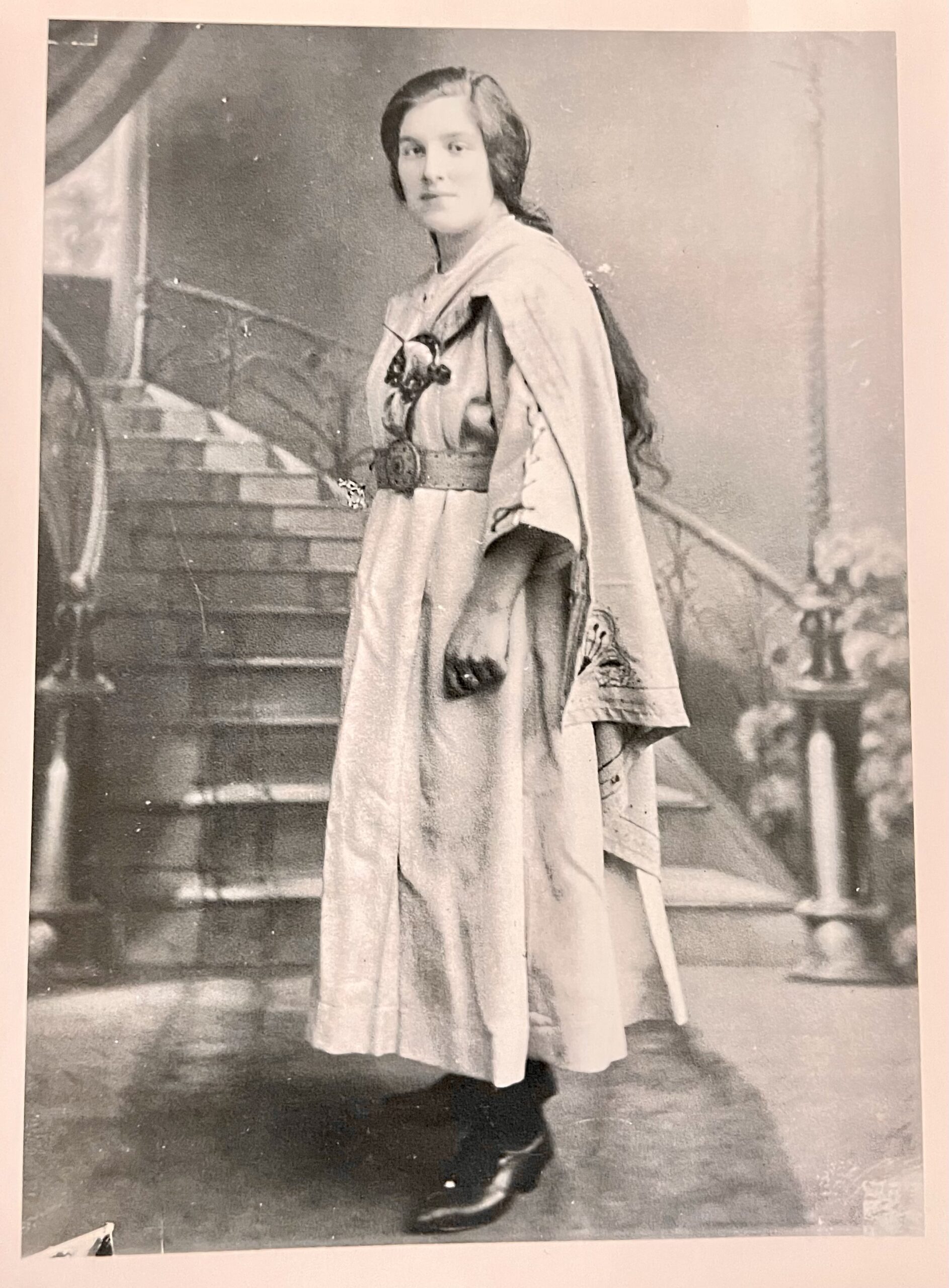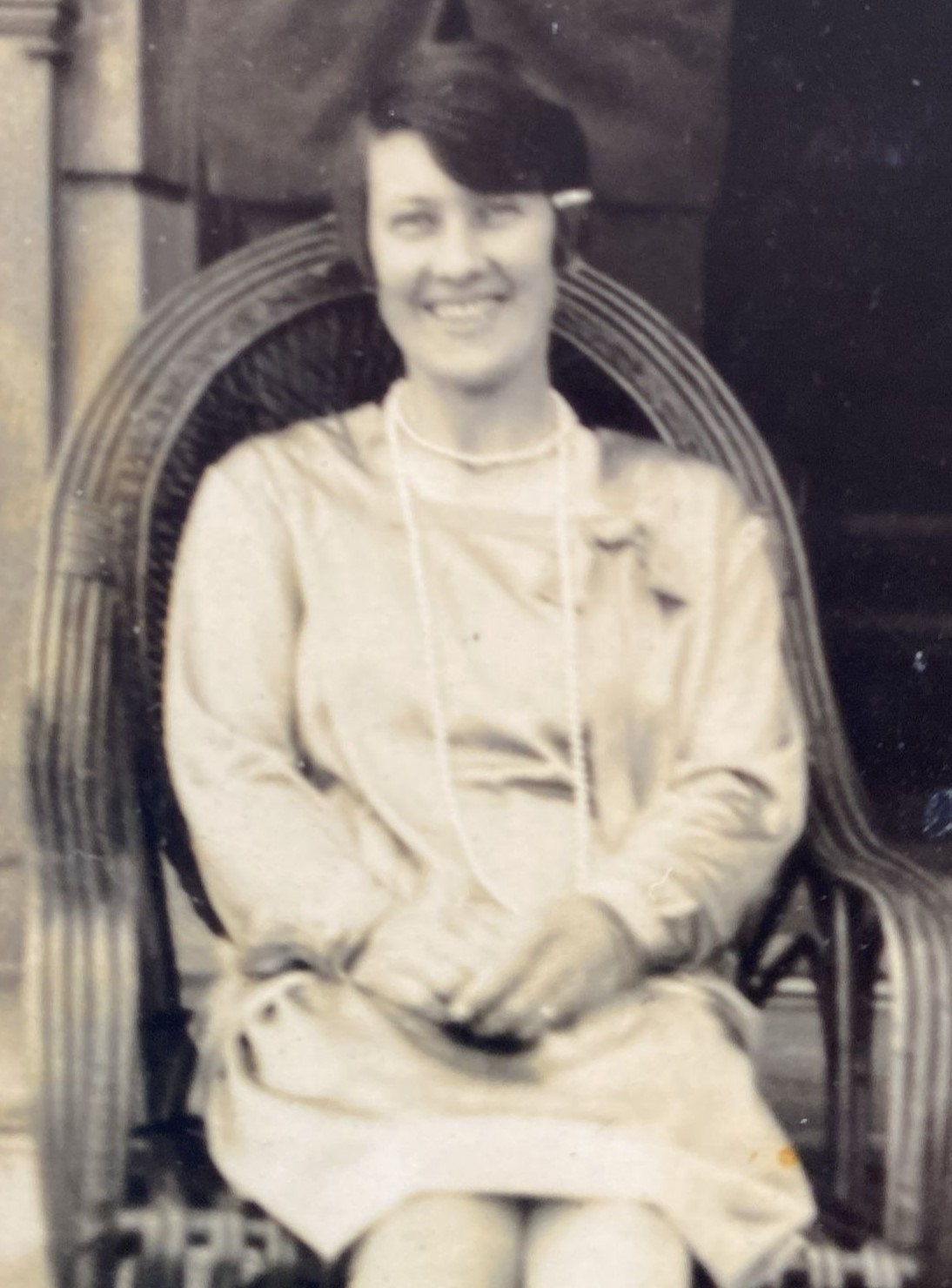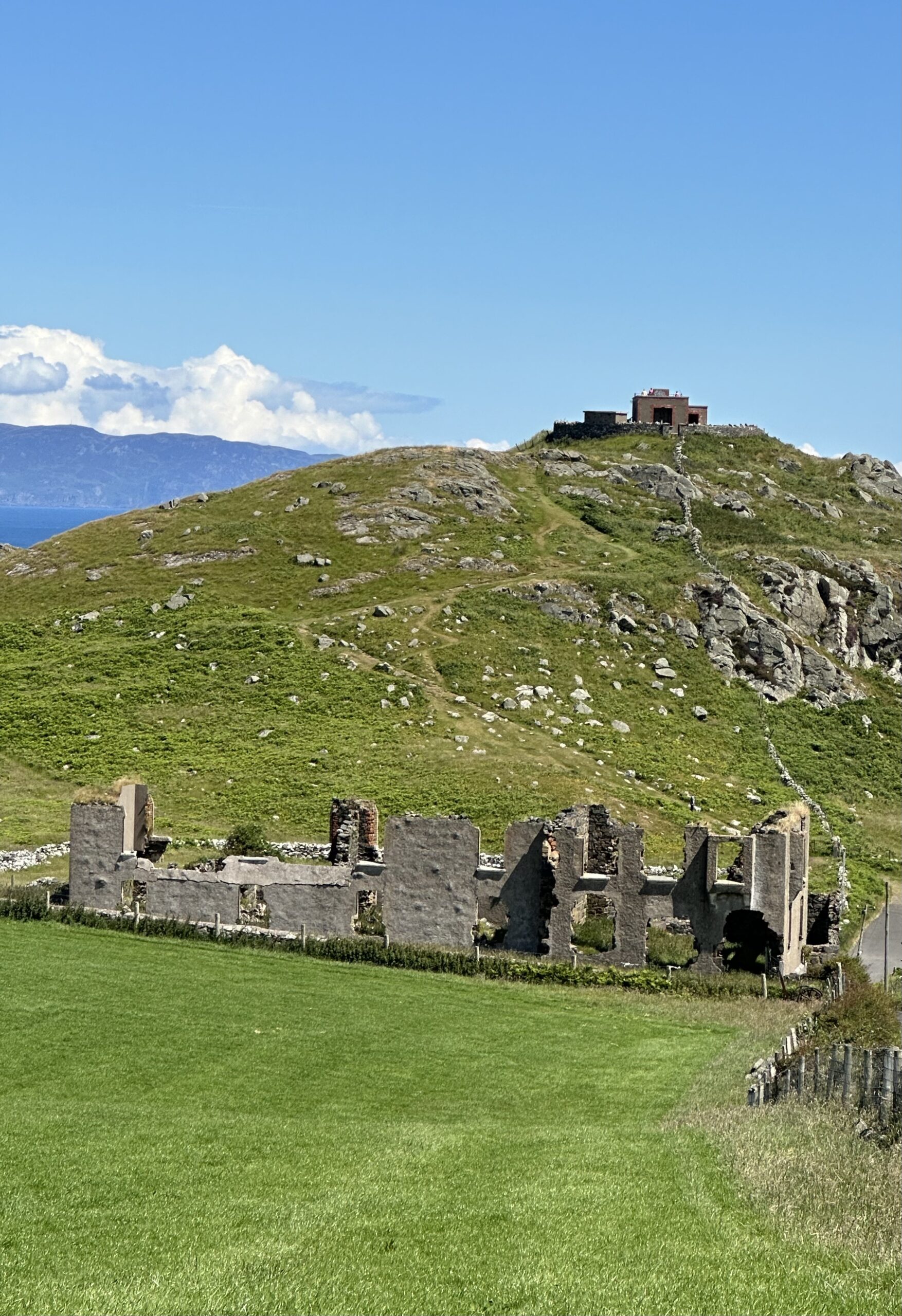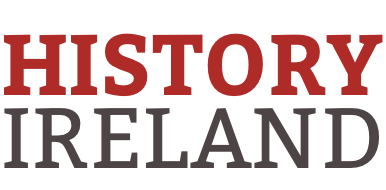By Margaret Ward
Lloyd George, speaking in the House of Commons debate on the Treaty on 14 December 1921, had instanced ‘a little area of Catholics right up in the North-east of Antrim, cut off completely from the South’. Nobody proposed taking that away from the north, he said. It was evident, therefore, even before Dáil Éireann had voted, that partition was not a priority. Would it be possible for nationalists in that small area in the north-east to challenge unionist rule and partition?
The Military Service Pensions Archive provides ample evidence of considerable opposition organised by a small group of families based in and around the Glens of Antrim, an opposition that included sisters as well as brothers, and one in which whole families suffered the consequences of community resistance to the formation of the northern state. While relatives of those involved knew few of the details of those difficult times, they were only too aware of the consequences of living as a minority in a deeply hostile state. I am indebted to them.

MARY O’LOAN
The O’Loan family from Carrycowan, in the valley of Glenravel, housed the headquarters of the 2nd Brigade of the 3rd Northern Division of the IRA. Of the nine children, Mary, a teacher, and her younger sister Gertie joined Cumann na mBan, while their brother Jack was a leading member of the 2nd Brigade. Gertie testified that ‘our house was always HQ for IRA officers and they were always made welcome there and food and shelter always provided for IRA officers and men’. The local police sergeant reported to Special Branch in 1922: ‘The O’Loan family have been the organisers of Sinn Féin in this district, and all strangers and members of the IRA have been entertained by them’. He described Mary O’Loan as ‘a very dangerous person who had a very bad influence in this district’. She was in charge of the Glenravel branch of Cumann na mBan and an organiser of branches in Ballymena, Ballycastle, Dunloy and Cushendall. Mary carried arms from Belfast and was a dispatch carrier (twice being arrested for short periods), supporting the brigade and divisional officers who met regularly in the O’Loan home. Dumps for arms and for messages were scattered in nearby fields, with Mary in charge. The O’Loan house was raided frequently and their property attacked by the B Specials, with two of their buildings set on fire.
THE McCAMPHILLS
The McCamphills were a large farming family of fourteen children from the small village of Dunloy. Lena, Breid, Susan, Lizzie and Casilda were co-founders of their local camogie association and members of the Gaelic League before becoming involved with Cumann na mBan. Their brother Hugh became a prominent member of the local IRA. Lena remembered the period as one of danger and sacrifice:
‘We did everything to forward the cause … I took care of guns, gave guns and ammunition to the boys as they appeared. Received seditious letters and carried and delivered them. I delivered dispatches—made first aid kits, did anything and everything that came to hand. Like all other Irish girls who had the cause at heart, for the eight years or so that the trouble was on, I lived and breathed nothing else.’

KATIE MURRAY
Katie Murray came from Laney, a small townland just north of Cushendall. There were four children in the family: Mary, John, Katie and Maggie. John would become better known as Seán Murray, a prominent Irish communist and hugely influential figure on the Irish left. John and Katie joined Sinn Féin in 1917, with John joining the IRA in April 1919 and Katie joining the Cushendall branch of Cumann na mBan in early 1920, serving as branch captain and working closely with the 3rd Battalion of the Antrim IRA. When the IRA campaign in the Glens began in the spring of 1920, Katie was immediately involved in preparations. By 1921, supporting the IRA in blocking roads, cutting telephone wires and attacking barracks, she arranged housing in case of casualties and organised the use of a motor car ‘in case of need’; for the barracks attack she took two rifles, 30 rounds of ammunition and a Mills bomb from a dump and brought them by car to ‘B’ company. When Carnlough and Glenarm coastguard stations were raided and a gun battle with police ensued, Katie picked up arms and delivered them to a point on the Carnlough Road. When Parkmore railway station was destroyed, she managed to procure petrol and have it delivered to a meeting place arranged by her.
MAGGIE MARTIN
Maggie Martin from Corkey was branch secretary for Loughguile, while her brother James was an IRA member. The making of explosives was an important part of the work of Antrim activists, as much of their campaign consisted of disrupting enemy movement through blowing up bridges. The engineering staff met in the Martin house, and Maggie visited chemists from as far away as Ballymena and Ballycastle to procure the necessary chemicals. An arms dump was constructed on their land, and when her brother James was away Maggie took charge of the dozen rifles, revolvers and ammunition. The women all attended first aid classes and continued to practise nursing techniques at branch meetings. This was particularly important in the remote areas of the Glens, when professional aid could take time to access. Maggie attended men wounded after the raid on Ballycastle barracks, and she nursed a Volunteer wounded during an arms raid on a gamekeeper’s house and another badly wounded when raiding Drumollagh post office. She later moved to Belfast to train as a nurse in the Mater Hospital.
KATIE McCARTE
Katie McCarte lived with her widowed mother, Katherine, on a remote farm in Glenariffe. She was captain of the local branch. Her house became an important depot for the receipt and delivery of dispatches, as carriers from Glenarm would leave dispatches which she would deliver to the Antrim Brigade HQ in Glenravel, a distance of eleven miles, also delivering messages to the McSparran home in Glenann, a five-mile journey from her house. Katie and her mother housed men on the run, provided facilities for a bomb factory, hid documents and weaponry in dumps and administered first aid.
MARY SCALLY
Mary Scally was a member of Ballycastle Cumann na mBan, while three of her brothers were active in the IRA. On 11 September 1920 the Torr Head coastguard and war signal station was raided by about 50 armed men, who stole five revolvers, 280 rounds of ammunition, rockets, four telescopes, two pairs of binoculars, the heliograph and the GPO telephone. The chief officer, George Timblick, reported later that the raid was well planned; each member of the crew was trapped separately, and he found himself covered by six revolvers. James McCaughan remembered how Mary had used her baby’s pram to transport arms:
‘She carried arms for the attack on Torr Coastguard Station in a pram underneath a child, in order that we would get them for the attack on this Coastguard Station. Also, she took part in the raids on the post office at the Quay, Ballycastle, helping in disposing of the articles taken in this raid. She also played an important part in saving my life at the Ballycastle Barracks raid in May 1922, at which I got very badly wounded. She was out that night, and when I was shot through the body, she assisted me to her own house, and during intense firing she went through it all, and brought the Doctor to stop the bleeding, and at great personal risk. She was the means of saving my life.’
‘MAY OFFENSIVE’
When the IRA ‘May Offensive’ of 1922 began, women’s support for the Volunteers was crucial. A coordinated attack was mounted by the Antrim Brigade, with the burning of stately homes, the burning of Ballymena railway station, a bombing of a railway bridge and attacks on Martinstown and Ballycastle barracks. Tom Fitzpatrick was in charge of the 3rd Northern Division’s 2nd Brigade and was wounded in the knee during a gun battle with Specials. Mary O’Loan travelled up to tend to him and helped to smuggle him out of the Glens.Specials and police spread over the Glens, facing sniper attack and returning fire. In Cushendall and Cushendun, police from Larne broke into Catholic homes, terrorising the residents as they searched for suspects. The 2nd Battalion of the 2nd Brigade reported that all active Volunteers were now formed into flying columns, ‘as a state of open war was now ensuing between the Imperial forces and the Catholic population’.
JANE O’NEILL
Jane O’Neill, a member of the Glenravel branch, worked in a solicitor’s office in Ballymena and provided vital intelligence to the local republicans, much of it gleaned from her daily train journey into town. She provided intelligence information before the attack on Martinstown barracks and, along with her Cumann na mBan comrades, helped those involved to get to safety. It was ‘pretty difficult’ to get food to those sheltering in the mountains, as it had to be done ‘after daylight in order that the hiding places of these boys should be kept as secure as possible’. Finding that it was ‘impossible to keep them safe much longer’, Jane was one of a small group to help them to places of safety. The Antrim Brigade depended on Cumann na mBan for food and support until they were able to move south. Women took an active role in dumping arms in safe places, bringing food to men in the hills and maintaining communications with the battalion officers. In the autumn of 1922 Katie Murray chartered cars to help them leave the area, accompanying the men in order to avoid the attention of the Specials. Katie McCarte reckoned that there were more than twenty men hiding out in her district. When it was considered safe, she helped to disguise men before they made their way south. On one occasion she helped a group to get across the border by faking a wedding, thereby preventing them from being arrested.

A ‘LOST LEGION’
Homes of republican activists were raided throughout the six counties. Some 600–800 IRA men avoided internment by crossing the border, travelling either to Donegal or to the Curragh army camp in Kildare. Around 500 internees were moved to the prison ship Argenta. Another 26,000–30,000 people left the North between March and June 1922. Some women were served with exclusion orders, forbidden to return to the six counties for at least two years. For many women, this signified the end of their time as republican activists. There was little more that they could do. Former Belfast ASU member Joe Murray wrote that he had to learn to ‘endure defeat’ as ‘we in the North found ourselves a “lost legion”’. Nowhere was this truer than in the Glens of Antrim.
Margaret Ward is Honorary Senior Lecturer in History at Queen’s University, Belfast.
Further reading
A. Grant, ‘Civil conflict in Ireland, 1922–3: political violence and the consolidation of Northern Ireland’, in H. O’Keefe, J. Crowley, D. ÓDrisceoil, J.Borgonovo & M. Murphy (eds), Atlas of the Irish Civil War (Cork, 2024), 83–99.
R. Lynch, ‘Ulster’, in H. O’Keefe, J. Crowley, D. ÓDrisceoil, J. Borgonovo & M. Murphy (eds), Atlas of the Irish Civil War (Cork, 2024), 619–27.
M. Ward, Rebel women: Cumann na mBan in Belfast and the Glens of Antrim 1914–1924 (Belfast, 2024).
